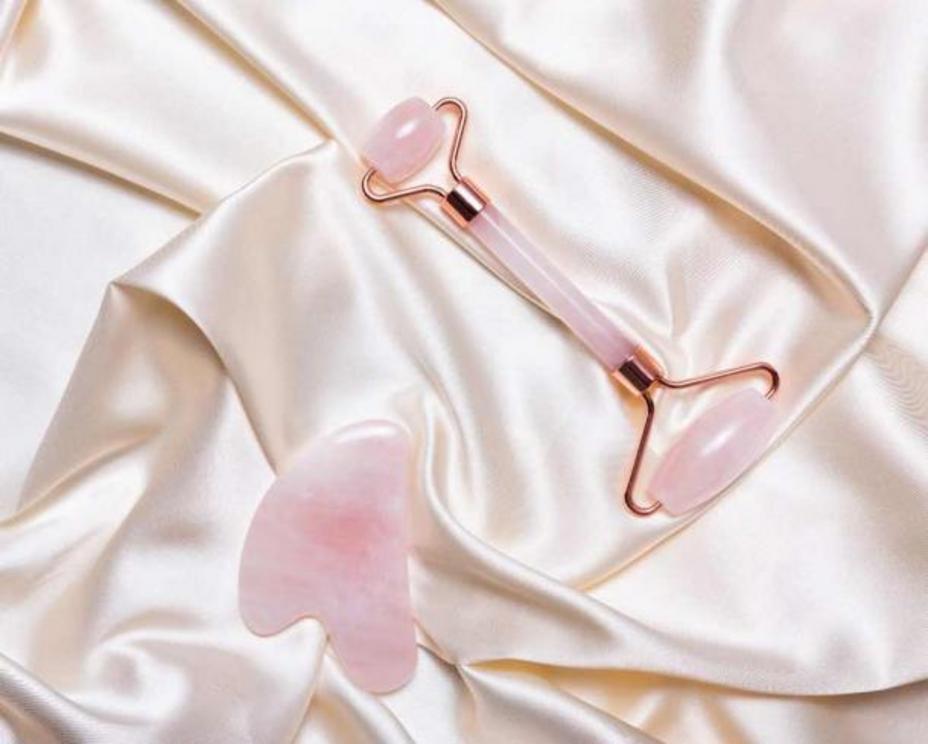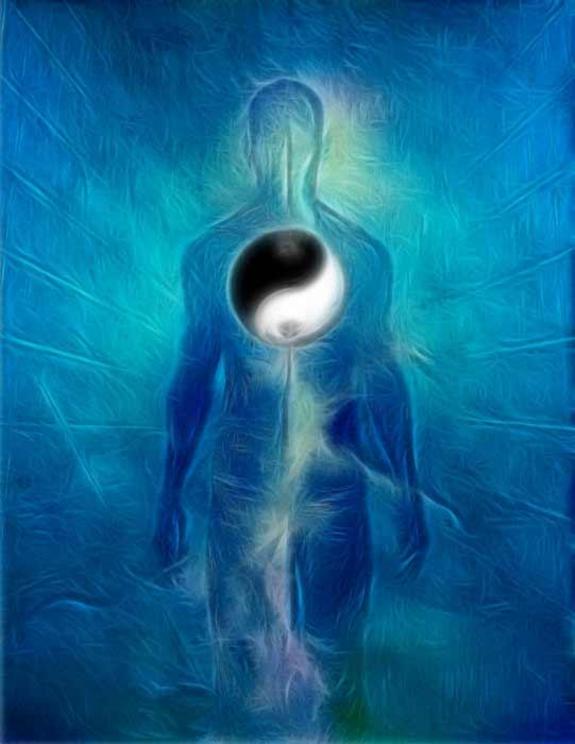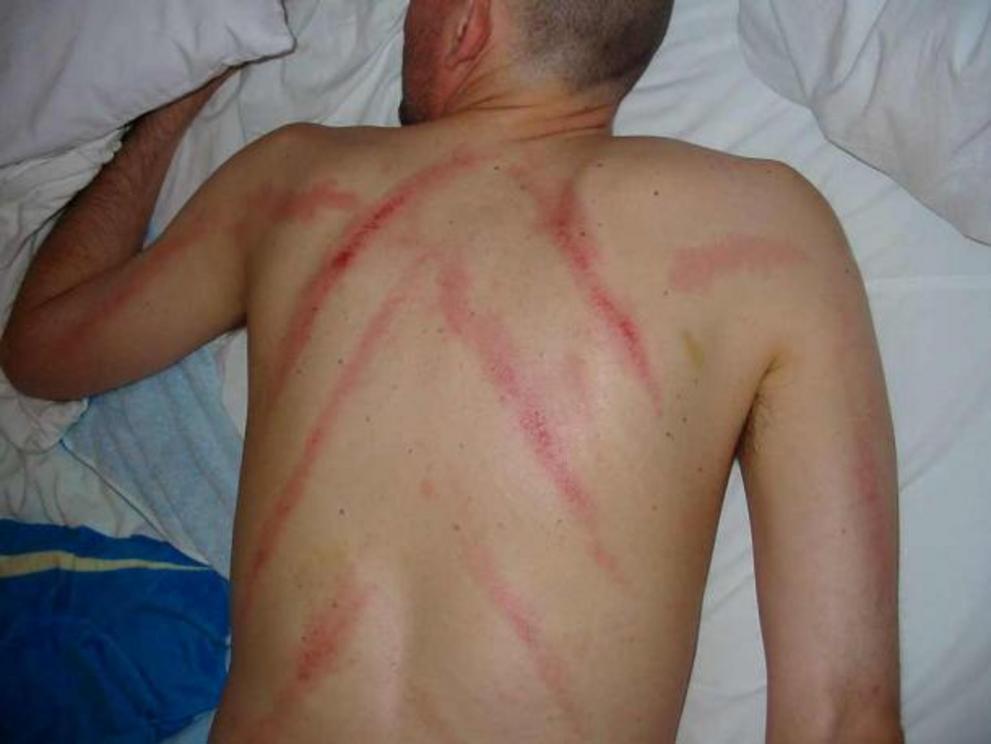Can ancient Chinese Gua Sha really scrape you into shape?
Top image: A woman receiving a Gua Sha treatment during a traditional Chinese massage.
The ancient Chinese healing practice of Gua Sha (pronounced gwashah) requires scraping your face, scalp or body with a specially shaped flat piece of jade or rose quartz. Now, Gua Sha has swept across the internet attracting a stage of celebrities who are pushing the idea that the ancient technique is “almost” a magical life elixir.
In the Chinese language, “Gua” represents the action of scraping and “Sha” means bruises. Thus, the term Gua Sha is to “scrape away the pain.” This is achieved with upward strokes on the skin using shaped jade or rose quartz pieces. The New Indian Express cites a “five-fold climb in public interest in Gua Sha in April compared to February” according to Google analytics. But why?
Gua Sha Is Super Popular Now And Here’s Why
According to The Skin Games website the ancient Chinese healing method has had “300,000 posts on Instagram after pop singer Lizzo declared on TikTok, “Y’all, I got me a Gua Sha,” while stroking her jawline with a stone.
 Pink jade face massage roller and Gua Sha pink quartz stone.
Pink jade face massage roller and Gua Sha pink quartz stone.
While celebrities endorse such ideas, and products, perhaps most have little understanding of the controversies associated with traditional Chinese medicines and its sometimes brutal practices, including the extraction of tiger claws and rhino horns to make ageing men virile.
An article in Medical News Today explains that in traditional Chinese medicine, “qi” or “chi” is the unmeasurable energy that allegedly flows through our living bodies. As it is similar to “The Force” in Star Wars, western medics generally shun the idea of “ chi” because it cannot be observed by testing.
Nevertheless, many Chinese people believe that a person’s chi must be free flowing to maintain one’s health and wellbeing, and of course they happily pay chi doctors for diagnosis and rebalancing.
 The idea behind Gua Sha is to release blocked energies in your face and body, which is related to blood flow issues from a Western medical perspective.
The idea behind Gua Sha is to release blocked energies in your face and body, which is related to blood flow issues from a Western medical perspective.
Real Efficacy of Gua Sha
When chi gets blocked, pain or tension is experienced in the muscles and joints and the act of “Gua sha” shifts the energy and relieves the symptoms. There exists however a faction of radical Asian scientists who align with western scientists and who also believe that “blood stasis” or blood stagnation causes many of these easy to cure aches and pains. These medics support “Gua Sha” for its ability to get the blood flowing, to relieve symptoms, and they generally leave the “chi” alone.
Internet “gua sha-ers” claim applying lotion to the face (or body) before a session prevents stretch marks from appearing on the skin, and internet influencers are all over what has become “the latest thing,” claiming Gua Sha makes their skin glow and removes their double chins.
If you can’t be bothered, however, with the hassle of getting a stone and lotion and finding the time to gaze at yourself in a mirror, trying to make yourself more attractive, you will no doubt soon be able to download the gua sha smartphone filter.
 A patient after a Gua Sha back treatment.
A patient after a Gua Sha back treatment.
What Really Makes Gua Sha Special: It Helps!
If we strip away all notions of “chi” and other non-scientific energies, Gua Sha still stands up and it really is worth doing.
“Autonomous sensory meridian response” (ASMR) is that tingling sensation that feels like spiders crawling on your scalp, or someone or something that spooks you sending a tingling sensation down your spine. Rubbing your skin sparks the ASMR response and this results in some thrilling sensations that alone have mild curative properties. Furthermore, it is known that lightly scraping the skin on the face with this action is known to reduce the inflammation associated with acne.
Many western physiotherapists advise patients to use a version of the ancient Chinese skin massage technique known as “instrument assisted soft tissue mobilization” (IASTM). Using a tool instead of the hands, a deeper massage is achieved by the physiotherapist, which in turn means increased pressure is applied to the damaged area of the patient’s body. If you want to try to get your blood flowing with the ancient Chinese gua sha method, these instructions are taken from The Skin Games .
The Gua Sha Technique in four steps:
● Use the tool at an angle of 45 degrees in an upward lifting motion
● Smaller tools are meant for smaller areas and bigger ones for the cheeks, forehead, and other body parts
● Small pointed round shapes are effective on pressure points
● Limit scraping to 5-10 times. Use on sensitive areas only once every three days.

